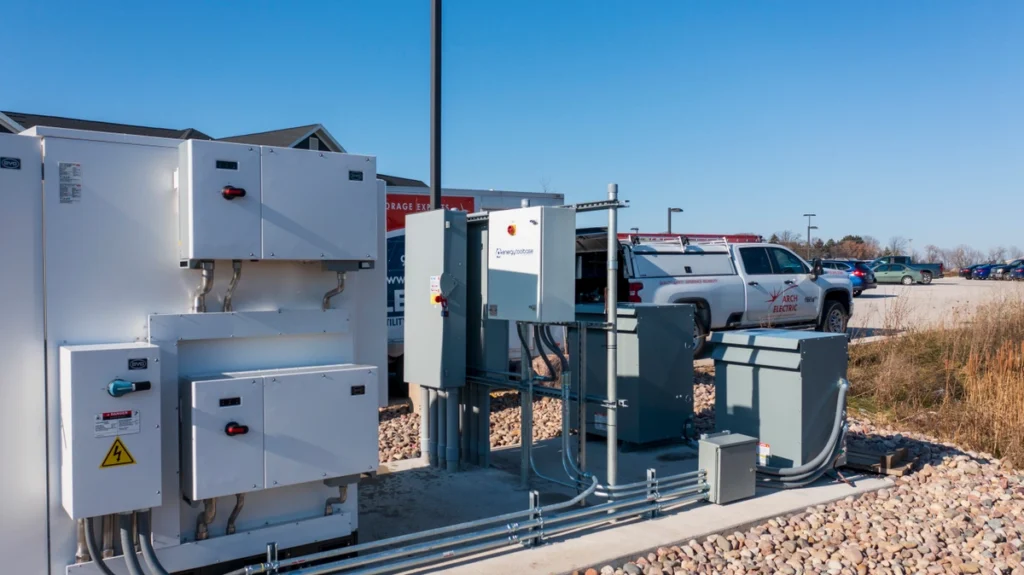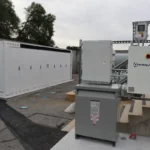An Energy Management System (EMS) is a crucial part of an energy storage system (ESS), functioning as the piece of software that optimizes the performance and efficiency of an ESS. An EMS coordinates and controls various aspects of the system’s operation to ensure that the stored energy is used most effectively to save the end customer money and that the battery is operating efficiently.
Every ESS requires a different strategy to provide optimal savings. Energy Toolbase’sAcumen EMS™ control software combines behind-the-meter and front-of-the-meter strategies to generate the highest possible revenue from an asset, including demand charge management, time-of-use arbitrage, PV self-consumption, demand response, DC clipping recapture, and more. We discuss how each control strategy works to save money below.
1. Demand Charge Management
Demand charges are when the utility records the highest average 15-minute period during each billing cycle and adds it as a surcharge on top of the standard rates. Demand charges can generally make up the most significant portion of a bill. Demand charge management reduces the demand charge portion of an electric bill. This strategy tracks the running metered demand against a threshold. If the running metered demand rises above the threshold, the EMS will discharge the battery to bring the average site-net-pv demand below the threshold again. Acumen EMS can predict a peak demand event and discharge the stored energy at a rate that can constrain the site’s demand.
2. Time-of-Use Arbitrage
Time-of-use arbitrage is an energy-based time-of-use optimizer. The strategy saves money by charging the battery during lower electricity price periods and discharging the battery to reduce the site loads during higher price periods. Simply put, this strategy utilizes an ESS to charge the battery when energy is cheap (“off-peak”) and then discharges back when energy is expensive (“on-peak”).
In time-of-use arbitrage, rate schedules with TOU pricing have users that pay various $/kWh rates according to time of energy consumption. The TOU arbitrage control strategy leverages the battery to buy and/or charge at off-peak prices and discharge and/or sell at on-peak pricing – resulting in utility bill savings.
3. Demand Response Programs
Demand response is the process of reducing or exporting power during peak time ranges when the grid is strained, strategizing to balance the grid and effectively maintain electric supply and demand in real time. Demand response aids in mitigating power outages caused by overconsumption, stabilizes the grid, and bolsters grid reliability. Participating in demand response programs enables customers to gain substantial cost savings, partake in various energy storage incentives, aid in grid reliability efforts, and create a more sustainable energy system.
Demand response programs influence various functions of the grid by minimizing or changing electric consumption during peak demand as a response to different incentives. Many electric system operators use demand response programs as an additional resource to balance supply and demand, which can assist in lowering electricity costs in wholesale energy markets and decrease retail electric rates. In demand response programs, customers might encounter critical peak rebates, variable peak pricing, time-of-use pricing, critical peak pricing, and real-time pricing. Using demand response, the ESS dispatches in response to pricing events communicated from the grid operator.
4. DC Clipping Recapture
In clipping recapture, clipped energy is stored in an energy storage system and later used at a more optimal time. Clipping recapture is associated with DC-coupled systems as the energy storage system is connected to the PV inverter’s DC voltage side. By leveraging clipping recapture, you can design a generation curve during daylight hours and employ the clipped energy that would have been lost. Lucrative projects start with a comprehensive solar system analysis and DC clip recapture modeling, which assists in having the correct tools to select the best equipment and adequately size the battery.
Clipping occurs when the PV inverter has reached peak AC output, requiring it to move the PV DC array voltage off the max limit power point to clip the PV array successfully. In a DC-coupled storage arrangement, DC-to-DC converters directly charge the battery from the DC bus with the extra power the PV inverter cannot utilize. In this configuration, energy can be leveraged by discharging the batteries via the PV inverter at a scheduled time when peak demand for power occurs and when there is low PV output.
5. Solar Self-Consumption
In this simple form of arbitrage, PV self-consumption aims only to use the on-site energy. During this process, the battery is charged during daylight hours when PV is produced and discharged when needed at a later time. Self-consumption can only be applied to solar + energy storage pairings, as the control strategy prevents PV exports to the grid. In self-consumption, the savings opportunity is found in the $/kWh difference between the retail and export rates. Self-consumption functions under a considerably straightforward framework – to charge the batteries from solar generation, then discharge to offset customers’ energy imports despite energy costs. In pairing storage with solar PV, the self-consumption control strategy leverages the battery to prevent exports to the grid, resulting in savings.



